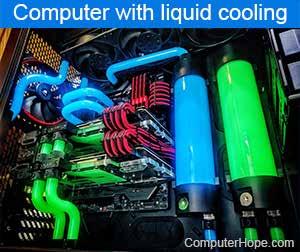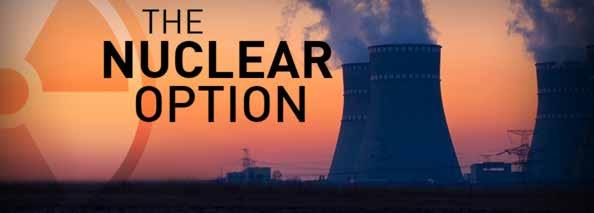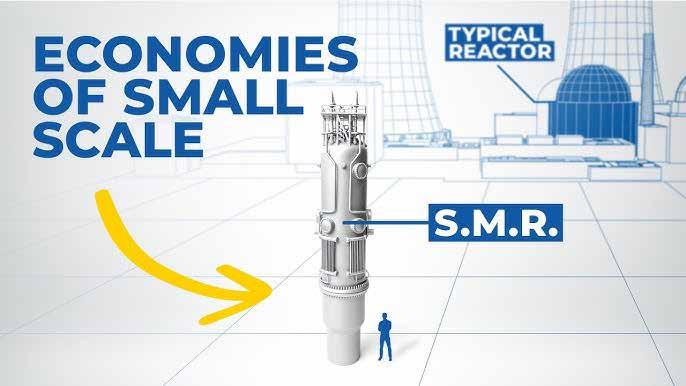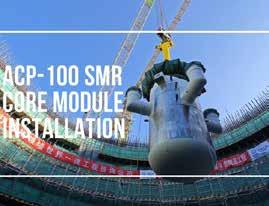
6 minute read
Industrial Cooling
The cooling is the factor that a data centre can do something about.
Location: Insofar as a data centre is not reliant on the users being around the physical building and the amount of staff needed is not great either, the trend is to build a data centre in ‘cold’ regions of the world. That means that the outside air can cool the centre.
Advertisement
Artic data centres are becoming reality, as well as in Finland, Sweden and so on. All in cold places.
However, there are also other tricks. Air cooling is an expensive thing. But water cooling is not.
The big thing here is that it I s possible to re-use the heat in the hot water for different purposes. No need for air-based heat pumps. This is proven technology.
So, how to get the electronics cooled with water (or other liquids):
Wiki: “Different liquid technologies are categorized in 3 main groups, indirect liquid cooling (water-cooled racks), direct liquid cooling (direct-to-chip cooling) and total liquid cooling (complete immersion in liquid.

Indirect cooling is rather simple. The plates of the racks are water-cooled.
The electronics are not in contact with the liquid, but insofar as the ‘motherboards’ and plates are cooled, the chipsets are cooled as well.
The direct liquid cooling is a bit more technical. It is comparable to the water-cooling of a car engine. Here is a water tank and a pump. The water circulates around the (protected) electronics and will cool it all down. The ‘hot’ water can be re-used via a heat pump.
The more fanciful one is total immersion. Wiki: “Immersion cooling is an IT cooling practice by which complete servers are immersed in a dielectric, electrically non-conductive fluid that has significantly higher thermal conductivity than air. Heat is removed from a system by putting the coolant in direct contact with hot components, and circulating the heated liquid through heat exchangers.
However, water cannot be used (of course) as water can conduct electricity. The fluid used is non-conductive so there is no way it can shorten the boards.
It looks a bit hectic (in my opinion) to see boards and racks and whole computers dumped into a tub of ‘water’, but it is highly effective.
And the heat can be reused. To attach a heat exchanger is a simple process.

In our quest to reduce our greenhouse gas emissions and thereby decrease global warming, we have to look at nuclear energy.
COP28 in December 2023, the Nuclear Energy Agency (NEA) and the International Energy Agency (IEA) pointed out a few astonishing facts.
The climate targets might be seen as ambitious and hard to achieve, but really represent the necessity. No way out of it.
Renewable energies by themselves will not be able to achieve the targets set. It is a question of ramping up the construction and finding locations.
Traditional big nuclear plants simply take too long to build (20 years or more), are highcost items (as it is bespoke construction) and prone to over-running time frames and costs.
It leaves a gap in any energy plan for the world.
One solution is to embrace new nuclear technology: Small Nuclear Reactors (SMR).
Wiki: “The Nuclear Energy Agency (NEA) has launched at the COP 28 a new initiative “Accelerating SMRs for Net Zero” to foster collaborations between research organizations, nuclear industry, safety authorities, and governments, in order to rapidly reduce carbon emissions for reaching the net zero emissions targets required before 2050 to limit the Earth global surface temperature increase.
In February 2024 European Commission has recognized SMR technology as an important contribution to decarbonization as part of EU Green Deal”
In essence: we are talking thousands of SMRs.
What is the design philosophy then?
The design goals are:
• Industrial manufacture – high-volume, reducing the cost per unit
• Latest technologies – get to generation IV and V,
• Few staff to run it – make it self-contained
• Modular – units can be added on to form higher-output
• Passive safety – automated and not depending on operators
Are we there yet? Not so fast. It is still complicated.
Although we have had small reactors around for many years, the experience and feasibility is not obvious.
True, we have seen nuclear submarines around, the big Russian ice breakers and so on. But there is a difference.
These designs are old. The power output is low (not much power is needed to drive a propeller) compared to what is needed if we should drive a small city.

The overall climate goal is to reach net zero by 2050. That has been agreed and is just necessary.
The three global players with the highest emission amounts are US, Europe and China. Sure, the rest of the world is also important, but if these three players can reduce emissions by just a little bit, we can make it.
China is the leading nation in wind and solar energy. China is now the biggest player in SMR developments as well.
Wiki: “China National Nuclear Corporation (CNNC) has developed a pool-type light-water reactor for district heating, called the DHR-400 (District Heating Reactor 400 MWt). It operates at low temperature and air pressure, so is easy to operate and decommission. Building cost is $230 million, taking three years to build. It is well suited for the existing centralised heating systems of northern Chinese cities, currently often coal fueled.
In July 2019, CNNC announced it would start building a demonstration small modular reactor on the north-west side of the existing Changjiang

Nuclear Power Plant by the end of the year. Design of the ACP100 started in 2010. It will be a fully integrated reactor module with an internal coolant system, with a 2-year refueling interval, producing 385 MWt.
In July 2021 the announcement was made that the construction of the first ACP100 has been started. The beginning of the installation phase was announced in December 2022. By March 2023, the main internal structure of the reactor building was completed.
Some of the SMRs being designed by other companies are even smaller. They will be able to power a handful of city blocks and can be transported on a truck.
It does come down to money.
If we can reduce the cost per MW dramatically by having a high output of units and reduce the production time as well, it can be viable.
The traditional plants (20+ year of bespoke construction) suck a lot of capital. Rapid manufacture and deployment of SMRs does not.
Automated and self-contained units will reduce the need for high staff compliments.
So, is it all good and great?
They still need to be safe and nuclear waste must still be catered for. Decommissioning is also an issue. And a lot more as well.
SMRs might not be a silver bullet but it might be the only thing we have.

The guitar
Without doubt, the guitar must be the most popular instrument we see. Everybody must have tried to play something.
It is an easy thing to transport (well, a tin whistle might be easier, but compared to a concert piano?).
It is the one we see all over in all genres of music. Of course it got very popular in the 1950s and ‘60s, based on the flower-power period. But even so.
There are different versions of the guitar, but let us look at the most common ones:
Traditional guitar. This is the one with the ‘guitar-shape’ and the hollow sound box. The sound box is there to amplify the sound when hitting the strings. It looks like a guitar and it looks like it has been around for centuries.
The other one is the electric guitar. No need for a sound-box. It might also be called a solid-body guitar. The sound is picked up electronically; hence the guitar can have any shape.
The draw-back is that an amplifier and electricity and so on are all needed before we can start playing.
It is strange really, but nobody really knows where it came from. The likely verdict is that it is like 3,000 years back in time from Babylon.
The more recent addition is of course Spain. The Moors might have brought it along in the 8th century. But it is from about 1600s we see it gaining in popularity. And it is from about 1850 we see the modern guitar as we know it today.
Classical guitar music is worth listening to. It has all the elements of guitar music and points to what we see today.
The popularity is linked to the late 1960s and early 70s – the Vietnam war had a massive impact on the youth culture and the guitar was always there. Listen to these tuens:







